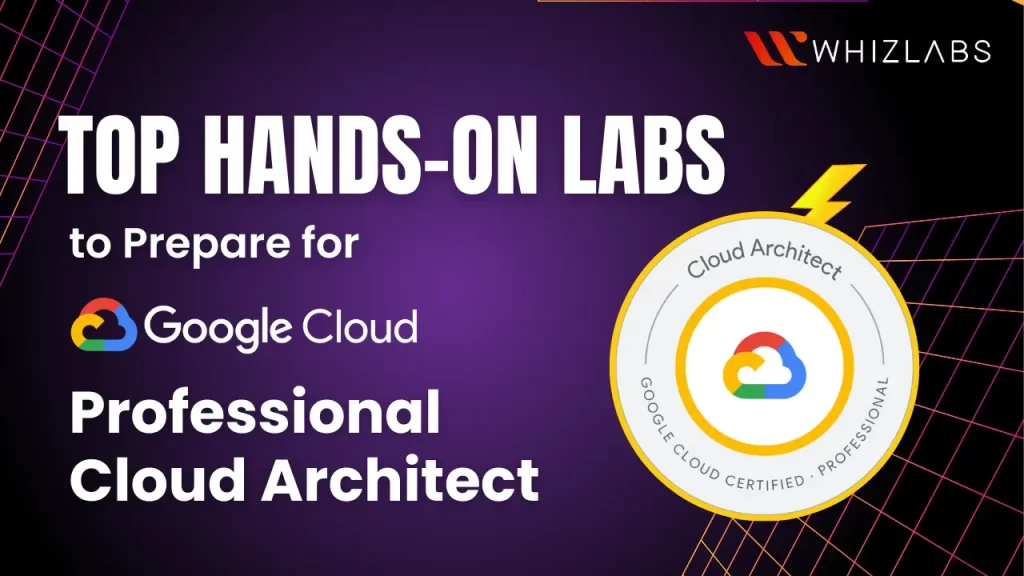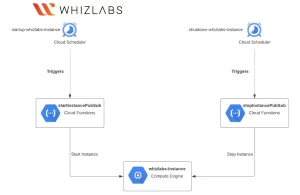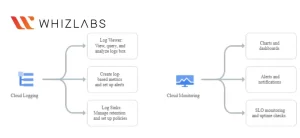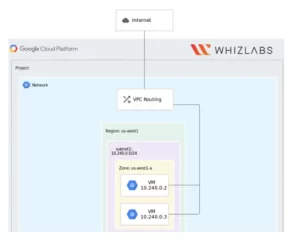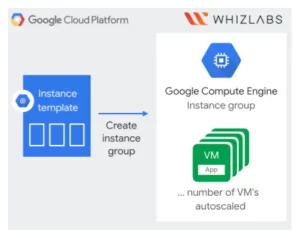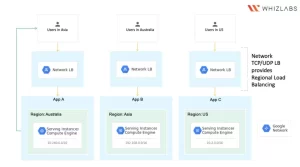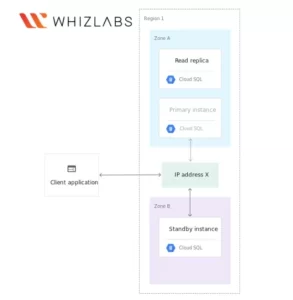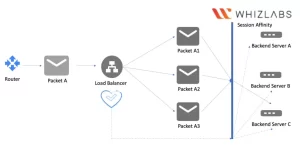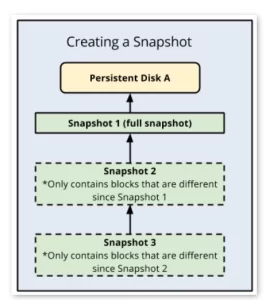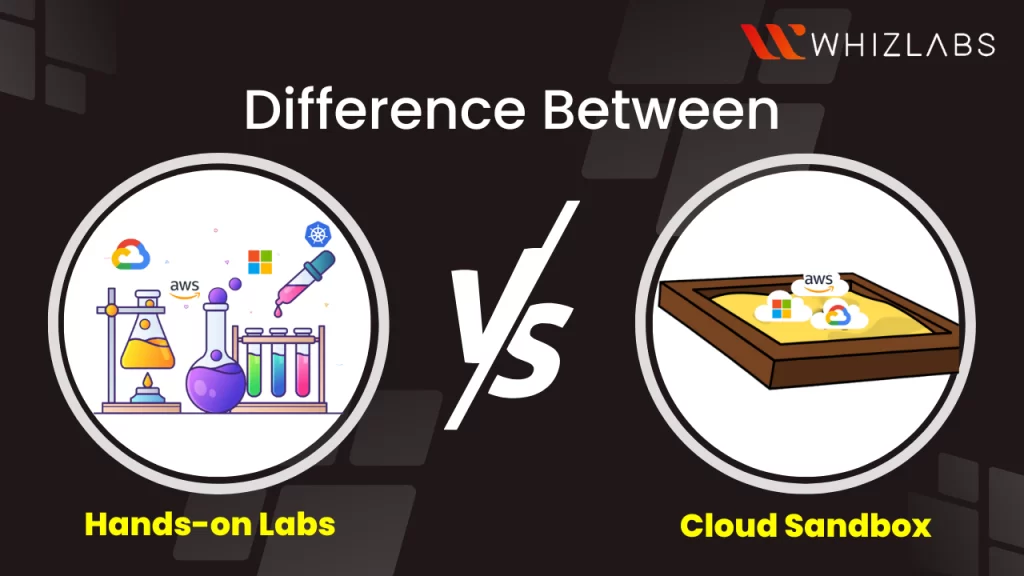Google Cloud Professional Cloud Architect certification is one of the most popular GCP certifications and is preferred by leading industries and all major cloud computing domains. It helps you learn how to improve organization outcomes by the adoption of Google Cloud technologies. However, to pass this certification, you must build a strong foundation by learning the fundamental concepts by heart and putting the theory into practice.
Now, speaking of the practical aspect of the examination, nothing can help you better than the hands-on labs in experiencing the ins and outs of the Google Cloud platform. It helps you dive deeper into real-world problems while sharpening your abilities to excel at cloud architecture.
This blog will run you through some of the top hands-on labs for GCP professional cloud architecture certification that you must include in your prep strategy. But before, let’s have a quick look at the certification overview. Let’s dive in.
Certification overview: Google Certified Professional Cloud Architect Certification
The GCP professional cloud architect certification helps you learn how to enhance business outcomes by leveraging Google Cloud technologies. By gaining a more profound knowledge of Google Cloud and cloud architecture, you can develop, design, and handle robust, scalable, reliable, dynamic, and highly available Google Cloud solutions to achieve operational efficiency.
In addition, the Google certified cloud architect certification will test your abilities to perform critical tasks like:
- Plan and design cloud solution architecture
- Create solutions for security and compliance
- Implementing and managing cloud architecture
- Provision and handle cloud solution environment
- Optimize and evaluate business and technical processes
- Look for security and reliability in operations
Know About: How To Prepare For Google Cloud Certifications?
Top hands-on labs for Google-Certified professional cloud architect certification
The GCP professional cloud architect certification hands-on labs are demo GCP environments that run on browsers and impart skills and abilities for techniques covered in the certification exam. These labs are designed by industry experts and offer 24/7 assistance. Hands-on labs are crucial to brush up your skills to tackle real-world scenarios and design solutions to increase operational efficiency and level up business results.
Also read: A beginner’s guide to Hands-on Labs
Here are some Google-certified cloud architect certification hands-on labs to consider.
1. Using Cloud Scheduler with Cloud Functions
This lab will guide you through adopting Cloud Scheduler with Cloud Functions. You will learn to use Cloud Scheduler to create and schedule Cloud Functions.
Task Details
- Establishing a VM instance.
- Using Cloud Functions to deploy functions that are Pub/Sub-triggered.
- Enabling Pub/Sub calls in Cloud Scheduler jobs.
- Cloud Scheduler Jobs testing.
2. Introducing Cloud Monitoring
This lab will walk you through how cloud monitoring works.
Task Details
- Establishing a VM instance.
- Putting in place the logging and monitoring agents on the instance.
- Establishing an alerting policy and an uptime check.
- Building a graphic and dashboard.
- Examining the results of the uptime check and any related alerts
3. Using Ansible on Google Compute Engine
In this lab, you will learn how to use Ansible on Google Compute Engine.
Task Details
- Open the GCP Console and log in.
- Deployment of the Cloud Shell.
- Installing Ansible in Google Cloud Shell
- making an Ansible Playbook file.
- executing the VM creation Ansible-Playbook file.
4. Introducing Cloud Shell and Google Cloud SDK
This lab will help you learn how to use Cloud Shell & Google Cloud SDK for initiating Google Cloud CLI Commands.
Task Details
- Using Cloud Shell to create a VM Instance and a Cloud Storage Bucket.
- Utilizing Cloud Shell to delete the VM Instance and Cloud Storage Bucket.
- Using the Cloud SDK to create a VM Instance and a Cloud Storage Bucket.
- Employing Cloud SDK to delete the VM Instance and Cloud Storage Bucket.
5. How to use Startup and Shut Down Scripts in Compute Engine
In this lab, you will explore using scripts for startup and shutdown in Compute Engine.
Task Details
- Opening the GCP Console and logging in.
- Utilizing Startup and Shutdown Scripts to Create a VM Instance.
- Analyzing Scripts for startup and shutdown
6. Introducing the GCP compute engine
This lab guides you through creating a VM instance for the GCP Compute Engine. You will develop a GUI-mode Ubuntu operating system.
Task Details
- Open the GCP Console and log in.
- Establishing a VM instance.
- Enter the instance via SSH.
- GUI mode RDP.
7. Introducing Autoscaling
This lab will help you learn about GCP Autoscaling based on CPU Utilization in this lab. You will design an instance template to specify the instance configuration. You will also define the Autoscaling Policy in an Instance Group that you create.
Task Details
- Open the GCP Console and log in.
- Instance Template Creation
- Instance Group creation
- Checking the operation Instance
8. Introducing cloud load balancing
In this lab, you will explore everything about Cloud Load Balancing. It will help you learn how to:
- Create a TCP Load Balancer.
- Create a Firewall Rule.
- Reserve an External IP Address.
- Configure the target pools
Task Details
- Open the GCP Console and log in.
- Establishing a Firewall Rule
- Setting aside a public IP address.
- Establishing Target Pools.
- Setting forwarding regulations.
9. Introducing GCP Cloud Storage Bucket
This lab will help you dive deeper into the GCP Cloud Storage Bucket and create a cloud storage bucket. In addition, you will find how to upload an object to the bucket.
Task Details
- Open the GCP Console and log in
- Establishing a bucketIP
- Publishing a file online
- Giving the bucket authorization.
10. Introducing Google Cloud SQL
In this lab, delve deeper into Google Cloud SQL’s features. You will also find out how to:
- Build a Database Instance.
- Build your database.
- Construct your tables and add data to them
Task Details
- Launch of Cloud Shell.
- Establishing a database instance.
- Establishing a MySQL database
- Design tables in your database
- Data entry into your table.
11. Introducing HTTP(S) Load Balancing
This lab guides you through an HTTP Load Balancer demonstration. It dives into various load balancer types.
Task Details
- Open the GCP Console and log in.
- Instance Template creation.
- Create an instance group
- Establishing a Firewall Rule
- Setting aside a public IP address.
- Establishing Target pools.
- Setting forwarding regulations.
- Making a health assessment.
Also Read: Exam Tips On Google Cloud Certified Professional Cloud Architect
12. Use Terraform to deploy networks
This lab guides you through creating a Terraform-based GCP VPC network.
This lab’s major goal is to concentrate on automating the development of infrastructure. You would need to go through the VPC labs, such as How to Build Custom VPC in GCP, to understand more about VPC.
In this lab, you will use Terraform to build a VPC with a Custom subnet.
Task Details
- Launching of Cloud Shell
- Setting up a VPC
- Taking down the infrastructure
13. Work with backups of the Persistent Disk of the VM
This lab guides you through GCP Storage Disk, Backup Snapshots, and Scheduled Snapshots. You will also learn to:
- Develop a storage disc in this lab.
- Create both a manual snapshot and a snapshot schedule.
Task Details
- Open the GCP Console and log in.
- Construction of a Compute Engine Disk
- Manually creating a Snapshot.
- Setting a schedule for a snapshot.
14. Introducing cloud deployment manager
This lab will guide you through Cloud Deployment Manager and help you create a deployment and template.
Task Details
- Open the GCP Console and log in.
- Establishing a template file.
- Launching the Compute Engine and the Firewall Rule by creating a deployment.
15. Host a Static Website on Cloud Storage Bucket and optimize your website using CDN
This lab will teach you how to host a static website in cloud storage by:
- Granting the website access rights across the internet.
- Adding a backend bucket to an HTTP(s) load balancer
- Enabling cloud CDN for static website
Task Details
- Open the GCP Console and log in.
- Forming a Bucket and uploading an HTML document
- Granting the HTML file access rights to the general public
- Attaching the HTTP(s) load balancer’s backend bucket being attached
- Allowing Cloud CDN for the Backend bucket
- Utilizing the load balancer IP to access the website on the internet
16. Know Firewalls Priority
This lab will teach you the concept of priority in Firewalls.
Task Details
- Design Ingress Firewall Rules with Different Priorities
- Construct two instances of the compute engine.
- Ping an instance from another.
- Changing the Firewall Tags and monitoring traffic flow.
17. Use Sticky Sessions with HTTP Load Balancers
You will learn how to create an instance using Startup Script in this lab while building skills for:
- Developing an instance group by utilizing this instance.
- Making an HTTPS Load Balancer
- Enabling Session Affinity, a Sticky Sessions feature
- Writing health assessments.
Task Details
- Open the GCP Console and log in.
- Making a VM instance
- Connecting instances with the instance group
- Load balancing system creation
- The Sticky sessions’ activation
- Making a health assessment.
- The Sticky Sessions’ Validation
18. Introducing cloud trace
You will discover more about Google Cloud Trace.
Task Details
- Develop a model application.
- Run the program using Cloud Run.
- Explore the Cloud Trace UI and gather traces
19. Introducing Network Load Balancer
This lab talks about implementing and working with TCP network load balancers.
Task Details
- Establishing a VPC in Custom Mode with two subnets.
- Setting firewall rules
- Compute Engine Instance creation.
- Unmanaged Instance Groups created for various IP Stacks
- TCP Network Load Balancing Configuration.
20. Use Routing Routes in HTTP(S) Load Balancer
This lab will help you discover how to create routing rules in HTTP(S) load balancers.
Task Details
- Create two distinct configurations of compute instances.
- Build two Unmanaged Instance Groups
- Build two Backend Services in the HTTP(S) Load Balancer.
- Load Balancer Routing Rules Addition.
- Setting up Cloud DNS.
- Adding Record Sets in Cloud DNS.
21. Learning Dataflow vs Dataproc
This lab guides you through GCP Dataflow, helping you create any necessary flows or pipelines and, to some part, automating the process.
This experiment demonstrates how to use GCP Dataproc to solve any mathematical issue by submitting it as a Job and receiving the answer with the highest level of accuracy.
You will also learn when and where to leverage Dataproc and Dataflow.
Task Details
- Construct a bucket, then upload the test file to it.
- In Dataflow, create a job and examine the results.
- Use Dataproc to create a Cluster and submit the task.
22. Introducing Dataproc
This lab demonstrates how to use GCP Dataproc, which solves any mathematical issue by submitting it as a Job and returns the answer with the highest degree of accuracy.
Task Details
- Use the Cloud Shell to build a Cluster and a Job.
- Task submission to the Cluster.
- Use the Console to update the Cluster
- Removal of the Cluster.
23. Use Cloud Shells for Google Cloud CLI commands
This lab guides you through using Cloud Shell to execute Google Cloud CLI commands. Using CloudShell, you will create a VM instance and a VPC network.
Task Details
- Open the GCP Console and log in.
- Launching and investigating CloudShell
- Establishing a VPC through Cloud Shell
- Using CloudShell to create a VM instance
- VM instance SSH access.
FAQ’s
Q: What are the prerequisites of the Google certified cloud architect certification exam?
A: To be eligible for the GCP professional cloud architect certification exam, you need the following:
- More than 3 years of industry experience
- More than 1 year of work experience in designing and managing solutions on Google Cloud.
Q: What are the domains for the Google certified cloud architect certification exam?
A: The GCP professional cloud architect certification exam has six domains:
- Design and plan cloud solution architecture
- Provision and manage solution infrastructure
- Design for compliance and security
- Optimize and analyze business and technical processes
- Manage implementation
- Ensure reliability of operations and solutions
Q: How difficult is the Google Cloud Architect exam?
A: Google’s Professional Cloud Architect (PCA) certification exam is difficult according to industry insiders and test-takers, and they reveal that they need to have a little more experience in working with GCP and it requires you to have solid experience.
Q: Which is better AWS or GCP certification?
A: If you want to enter into an entry-level position in a cloud-related job, you will get more chances if you choose to learn AWS as more job offerings seek expertise in AWS. If you are interested in specialized fields like Big Data and Machine learning in the cloud, then you should take GCP.
Q: Is Google Cloud Architect certification worth IT?
A: Yes, the Google Certified Professional Cloud Architect Exam is indeed a good value addition. Many IT firms are restructuring their teams to use more effective and resourceful cloud technologies. And thus getting Google Cloud Architect certification can open doors to more job opportunities.
Also Read : Comparison of Google Compute Engine vs App Engine
Summary
This blog helps you comprehensively view the Google-certified professional cloud architect certification exam. Gaining a solid hold of practical skills will help you ace the exam and solve real-world challenges effortlessly. And GCP Cloud Architect hands-on labs are the best way to do it.
Apart from this, for the overall invincible preparation of the GCP professional cloud architecture exam, you must keep revisiting the cert domains and brush up on your fundamental knowledge. Whizlabs offers a myriad of resources to solve this purpose. Check out our practice papers, 41 video courses designed by industry experts, and Google Cloud Sandbox so you can experiment and play in the demo environment. And also, has 70+ hands-on labs to help you demonstrate skills.
- Which AWS Certification is Best For Developers - December 5, 2023
- Top Popular Hands on Labs for Google Cloud Platform (GCP) - October 29, 2023
- 7 Exam Tips for Google Cloud Database Engineer Certification - September 21, 2023
- What Is Azure Web Application Firewall (WAF)? - September 8, 2023
- The 5 Best Team Chat Apps for Business in 2024 - August 10, 2023
- What is Microsoft Cybersecurity Reference Architectures? - July 31, 2023
- How to Secure & Migrate your SAP Environment on AWS - July 26, 2023
- A Comparison of SUM-DMO and SWPM - July 21, 2023

